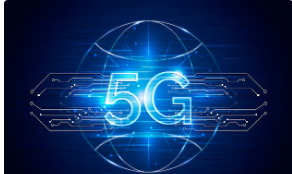The advent of 5G technology heralds a new era of connectivity and communication, promising faster speeds, lower latency, and greater capacity than ever before. As the fifth generation of wireless technology, 5G is poised to transform industries, enable innovative applications, and enhance the way we live and work. In this article, we will explore the fundamentals of 5G technology, its potential applications, and the implications for businesses and consumers worldwide.
1. Understanding 5G Technology
5G technology represents a significant leap forward from its predecessors, offering unprecedented speed, reliability, and responsiveness. Unlike previous generations of wireless technology, which primarily focused on connecting people, 5G is designed to connect virtually everything, including machines, devices, and sensors, through its high-speed, low-latency networks.
2. Key Features and Benefits
Speed: 5G networks promise download speeds of up to 10 gigabits per second (Gbps), significantly faster than 4G LTE networks. This enables high-bandwidth applications such as ultra-high-definition video streaming, virtual reality (VR), and augmented reality (AR) to be delivered seamlessly.
Low Latency: 5G technology reduces latency to as low as one millisecond (ms), enabling real-time communication and responsiveness. This is critical for applications that require instant feedback, such as autonomous vehicles, remote surgery, and industrial automation.
Greater Capacity: 5G networks have greater capacity than previous generations, allowing them to support a massive number of connected devices simultaneously. This enables the Internet of Things (IoT) to scale to unprecedented levels, facilitating smart cities, smart homes, and industrial IoT applications.
3. Applications of 5G Technology
Smart Cities: 5G technology enables the development of smart city initiatives by providing the connectivity infrastructure needed to support a wide range of IoT devices, sensors, and applications. From smart traffic management and public safety to environmental monitoring and energy efficiency, 5G empowers cities to become more efficient, sustainable, and livable.
Telemedicine: With its low latency and high reliability, 5G technology facilitates telemedicine applications, allowing healthcare providers to deliver remote consultations, diagnostics, and surgeries with greater precision and efficiency. This is particularly valuable in rural or underserved areas where access to healthcare services may be limited.
Industry 4.0: In the manufacturing sector, 5G enables the realization of Industry 4.0 initiatives by enabling real-time monitoring, control, and optimization of production processes. By connecting machines, robots, and sensors, 5G enhances productivity, quality, and flexibility, driving innovation and competitiveness.
4. Challenges and Considerations
Despite its potential, the widespread adoption of 5G technology faces challenges such as infrastructure deployment, spectrum allocation, and cybersecurity. Building out the necessary infrastructure, including small cells and fiber-optic networks, requires significant investment and collaboration among stakeholders. Additionally, ensuring the security and privacy of 5G networks and devices is paramount to prevent potential vulnerabilities and cyber threats.
5. Future Outlook
As 5G technology continues to roll out globally, we can expect to see accelerated innovation and adoption across industries. From enhanced mobile broadband to mission-critical applications, 5G will unlock new opportunities for businesses, governments, and consumers alike. Moreover, advancements in areas such as edge computing, network slicing, and AI-driven optimization will further enhance the capabilities and performance of 5G networks.
Conclusion
5G technology represents a paradigm shift in connectivity and communication, offering unprecedented speed, reliability, and capacity. With its transformative potential, 5G will revolutionize industries, enable innovative applications, and drive economic growth and societal progress. However, realizing the full benefits of 5G requires addressing challenges such as infrastructure deployment, spectrum management, and cybersecurity. By harnessing the power of 5G, we can create a more connected, intelligent, and resilient future for generations to come.

